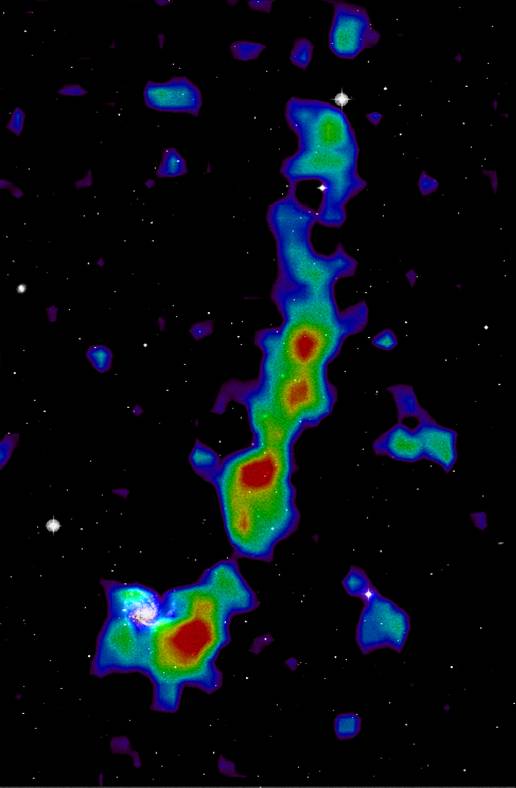

| A candidate isolated massive dark galaxy VirgoHI21, was detected by Davies et al (2004) during the HI Jodrell All-Sky Survey (HIJASS) and corroborated by Arecibo and WSRT observations (Minchin et al 2007 ). VirgoHI21 lies some 100 kpc north of NGC 4254, M99, one of the brightest spiral galaxies in the Virgo Cluster. Well-known for its prominent optical lopsidedness and strong m=1 spiral mode, NGC 4254 is about 3 degrees, or 1 Mpc at the Virgo distance, from M87 and appears to be moving at very high speed relative to the cluster. Previous observations have suggested that the galaxy is falling into the cluster for the first time. It is, however, not HI deficient. As illustrated in the Figure to the right, the more sensitive ALFALFA observations of the entire field show clearly the existence of a huge HI stream emanating from NGC 4254; VirgoHI21 is only one condensation (see below) in this stream. The amount of HI detected in the tail by ALFALFA is only about 10% of the total HI gas associated with NGC 4254. See Haynes, Giovanelli & Kent (2007) for further details. The figure to the right shows contours of HI column density obtained from the ALFALFA observations of the field around VirgoHI21 and NGC 4254 superposed on an optical image. The HI tail extends from NGC 4254 (visible in the lower left) more than 250 kpc to the north (assuming it lies at the Virgo distance of 16.7 Mpc). |

|
